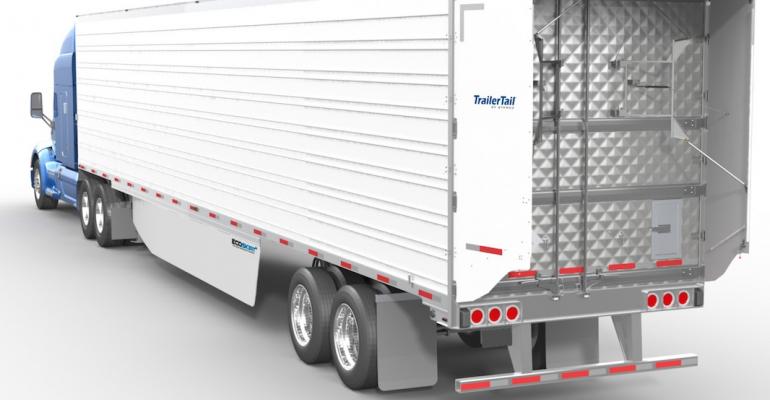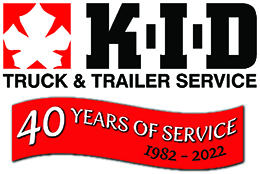
The Government of Canada is delivering on its promise to fight climate change while growing the economy. One of the ways that the Government is taking action is reducing carbon pollution from the transportation sector.
Transportation is one of the largest sources of greenhouse gases in Canada, accounting for 24% of all emissions. Carbon dioxide discharge from heavy-duty vehicles is comparable to the emissions from Canada’s nine coal-fired power plants. In response to this reality, updated regulations were established for trailers pulled by transport trucks. These standards were designed to make pulling trailers easier, improving the truck’s overall fuel efficiency and reducing carbon emissions.
Trailer Add-ons for Greater Fuel Efficiency
Drivers and fleet managers are constantly assessing ways to make their vehicles more profitable. As fuel is the single biggest line item expense in most transportation budgets, there is a focus on improving the overall efficiency of the fleet. Making the trailers more aerodynamic would further enhance fuel efficiency.
To fully appreciate why one should consider semi trailer aerodynamics; let’s examine how fuel is consumed on the open road. A moving truck experiences resistance from the air around it, it’s called drag and the faster the vehicle travels, the more resistance there will be. When you attach a trailer, this issue magnifies. In addition to the wind resistance at the front of the truck, it catches between the truck and the trailer, churns under the trailer body and creates a low-pressure vacuum behind it that causes the trailer to fish-tail.
Drag accounts for more than 65% of the fuel that a truck consumes on the highway. Introducing accessories to truck and trailers can reduce drag enough to generate fuel savings by an average of 6 – 8%. The incremental cost and added weight would need to be offset by significant savings, which for some drivers is $ 500 or more each month. The added benefits include greater stability, better handling and reduced driver fatigue.
When evaluating trailer aerodynamics, the focus is on three areas:
- Gap between truck and trailer
- Rear of the trailer
- Trailer’s underbody
Most frequently implemented are skirts, also known as fairings that are routinely used to reduce wind resistance. Attached to the under body of the trailer, they stop air from getting underneath it. Aerodynamic mud flaps are another common remedy for drag.
Stemco Trailer Tail System
Companies such as Stemco sell trailer tail systems that attach to trailers at the back. They slope inward to direct airflow smoothly away from the trailer, intercepting the vacuum that pulls the vehicle backward. The most efficient system Stemco offers weigh 185 pounds. Used by itself without any other trailer aerodynamic add-ons, the company professes to improve fuel efficiency by nearly 6%.
EcoSkirt™ Semi Trailer Skirt.
The STEMCO EcoSkirt™ truck skirt improves fuel efficiency by reducing aerodynamic drag under the trailer where air hits the trailer’s rear axles. The EcoSkirt™ side fairings streamline and guide the air around the sides and to the back of the truck trailer. By combining EcoSkirt™ with the STEMCO TrailerTail®, fleets can achieve 8-12% fuel savings.
Ultra-Flex Panels.
EcoSkirt™ fairings are constructed of an ultra-durable and flexible thermoplastic composite material similar to that used in trailer scuff liners. The material’s fibers allow the panels to withstand frequent impacts with road elements such as concrete curbs, steep loading docks and ice banks. The material is also extremely lightweight for minimal payload impact.
Universal Application.
EcoSkirt™ technology is compatible with all trailer models and is available to be factory installed on new trailer orders or retrofitted to your existing fleet. Custom options are available for trailer applications requiring access to underside-mounted equipment such as hydraulic life-gate boxes, loading ramps and spare tire carriers.
Durability.
The EcoSkirt™ reinforced panels are designed to give with impact and return to form, resist extreme heat, cold and precipitation, and employ galvanized steel hardware for tough, corrosion-free performance, year after year.
Options.
EcoSkirt™ panels are offered in a variety of configurations to best fit your fleet profile and operating needs. Custom options, including colors, decals and shapes, are available to maximize branding visibility.
Safety.
EcoSkirt™ side fairings streamline the airflow under and around your semi-trailers, stabilizing your trailers and improving visibility by reducing road spray. The EcoSkirt™ also acts as a protective guard, mitigating the occurrence and severity of under-vehicle accidents with vehicles, cyclists, and pedestrians.
If you want to determine your prospective fuel savings, you can visit the Stemco ROI calculator at http://www.stemco.com/fuel-savings-calculator/
K.I.D. Truck & Trailer Service is proud to be supplying Halton and Peel regions with Stemco trailer aerodynamic products.
Photo Credit: Stemco Trailers Promotional Picture

It’s incredible that drag accounts for so much gas consumption when driving on the freeway. My cousin is starting a new business soon that will require him to ship more inventory. He needs to get some semi-trailers and start getting them more fuel-efficient to save money.